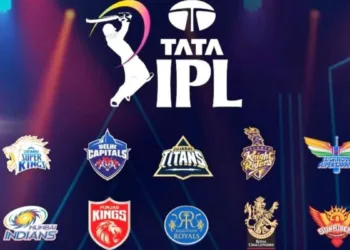Aditya L1 Mission is a sun-oriented mission by the Indian Space Research Organization (ISRO) that means to concentrate on the Sun and its effect on the World’s environment. The spacecraft will be put in a radiance circle around the Lagrange point 1 (L1) of the Sun-Earth framework, which is around 1.5 million km from the Earth.
The spacecraft will have the ability to continuously observe the Sun with minimal obstruction or eclipses. Initially, the Aditya-L1 mission was designed as a small satellite weighing 400 kg (880 lb) in low Earth orbit (800 km), equipped with a coronagraph to study the solar corona. However, its scope has now been expanded to become a comprehensive solar and space weather observatory.

The Aditya L1 mission is set to send off on September 2, 2023, at 11:50 AM IST from the Satish Dhawan Space Center SHAR (SDSC-SHAR) in Sriharikota, India. The mission will be sent off by ISRO’s PSLV XL spacecraft. The mission is supposed to require around 150 days to arrive at its destination.
The significant science targets of the Aditya-L1 mission are to concentrate on the sun-powered air, sun-oriented attractive tempests, and their effect on the climate around Earth. The mission will convey seven payloads, including a coronagraph, a sun-powered bright imaging telescope, and a sun-oriented X-beam screen, among others. The information gathered by the Aditya-L1 mission will assist scientists with better figuring out the Sun and its effect on the World’s current circumstances.
The day for kickoff and time for the Aditya L1 mission are as per the following:
Date: September 2, 2023
Time: 11:50 AM IST

The mission goals of the Aditya L1 mission are as per the following:
Investigation of Sunlight-based Upper Environmental Elements: The mission plans to concentrate on the elements of the sun-oriented upper air, including the chromosphere and corona. By noticing these locales, researchers desire to acquire a superior comprehension of the cycles and peculiarities happening in the Sun’s external layers.
Examination of Sun-powered Exercises: Aditya L1 Mission will zero in on concentrating on different parts of sun-oriented exercises, for example, sun-based impacts and exceptional events. By breaking down these occasions, researchers expect to uncover the components behind them and their consequences for space weather.
Investigation of Room Climate: The mission tries to examine the effect of sun-oriented exercises on space weather. This incorporates concentrating on the proliferation of particles and fields, as well as the elements of room climate phenomena. Understanding space weather conditions is pivotal for safeguarding satellites, correspondence frameworks, and different advancements that are defenseless against sun-powered radiation and attractive tempests.
Understanding Coronal Warming: Aditya L1 intends to add to the comprehension of coronal warming, which is the peculiarity where the Sun’s peripheral layer, the crown, is fundamentally more sultry than the layers beneath it2. This strange cycle is as yet not completely perceived, and concentrating on it can give important bits of knowledge into the Sun’s energy move instruments.
Examination of Coronal Mass Launches (CMEs): The mission will likewise zero in on concentrating on coronal mass discharges, which are enormous emissions of plasma and attractive fields from the Sun’s corona. By concentrating on CMEs, researchers desire to all the more likely figure out their qualities, elements, and the potential effect they can have on Earth’s space climate.
Portrayal of Pre-endlessly flare Exercises: Aditya L1 means to describe pre-endlessly flare exercises on the Sun. Flares are extreme eruptions of radiation and energy delivered by the Sun, and concentrating on them can give experiences into the cycles that trigger these occasions and their effect on space climate.
Examination of Sunlight-based Propagatory Impacts: The mission will study the propagation impacts of sun-powered elements in the interplanetary medium. This incorporates understanding how sun-based peculiarities spread through space and associate with the general climate.
By achieving these goals, the Aditya L1 mission plans to upgrade how we might interpret the Sun, its way of behaving, and its impact on space climate, at last adding to headways in space science and innovation.
Conclusion
The Aditya L1 mission is a sun-powered mission by the Indian Space Research Organisation (ISRO) that expects to concentrate on the Sun and its effect on the World’s current circumstances. The mission will convey seven payloads, including a coronagraph, a sun-powered bright imaging telescope, and a sun-based X-beam screen, among others. The information gathered by the Aditya L1 mission will assist scientists with better figuring out the Sun and its effect on the World’s current circumstances.
The significant goals of the mission are to concentrate on the sun-powered climate, sun-oriented attractive tempests, and their effect on the climate around Earth, and to examine different parts of sun-based exercises and their impacts on space climate. The Aditya L1 mission is an aggressive undertaking that tries to reveal insight into different parts of the Sun and its way of behaving, eventually adding to headways in space science and innovation.








